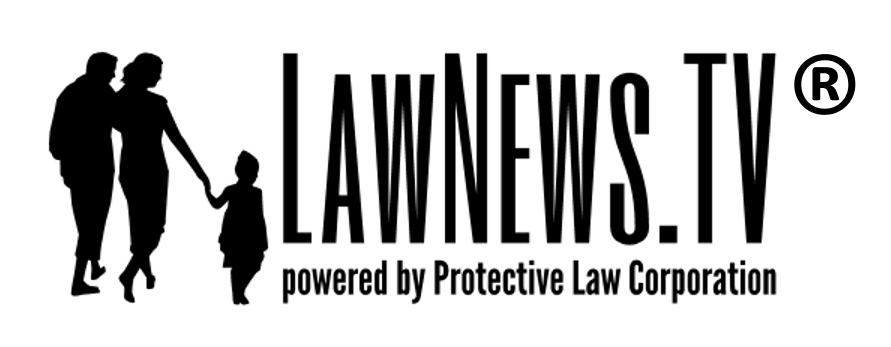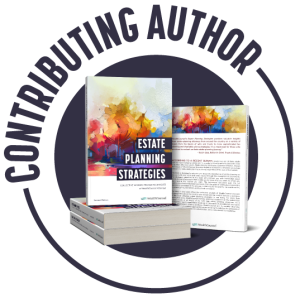The Basis Optimized Trust (BOT) is an advanced option for planning that may yield better results than the more common types of irrevocable trusts, such as credit shelter (bypass) trusts, or qualified terminable interest property (QTIP) trusts, which have been the staple of tax planning for decades.
The BOT design is not new. The name is new (I just made it up for this post), but the design was developed years ago by the brilliant Edwin P. Morrow, what he calls the Optimal Basis Increase and Income Tax Efficiency Trust (OBIT). Not sure if I will stick with BOT as that word has negative connotations (spambots are the reason you have to contact me for a free membership on this site), but Intentionally Defective Grantor Trust (IDGT) remains popular as the grotesquely market-deaf name of another planning technique, so maybe BOT has a future. Anyway, the OBIT aka BOT rests on solid planning concepts, and is backed up by solid authority, but adoption by the estate planning bar has been slow — mostly because of inertia, reluctance to try cutting (bleeding?) edge techniques, and the tendency to seek safety among the herd. Safety must be a priority, and some may prefer standard designs, but if designed carefully the BOT can provide very substantial benefit.
Tired Old Trusts (TOTs)
For many years the “ABC” design was almost universally popular for a married couple’s foundational estate planning, because the estate/gift tax exclusions were low and predictable. Traditionally, A is the Survivor’s trust; B is the bypass, or credit shelter trust, which is funded by the Decedent’s estate up to the exclusion amount; C is the QTIP trust, which is funded with the balance of Decedent’s estate (a QTIP is drafted to qualify for the unlimited marital deduction, eliminating any estate tax on the first death, and the basis of the QTIP property is adjusted to market value at time of Survivor’s death, eliminating any capital gains tax).
Beginning in 2010 there was a great deal of uncertainty about whether there would be an estate tax, and how large or small the exclusion would be. Democrats argued for as low as $2.5 million estate tax exclusion, and also for uncoupling the unified estate/gift tax exclusion so that the gift tax exclusion would be only $1.5 million. I may be off a bit but those are the numbers I recall Hillary advocating in 2016, numbers that would have required many more families to pay (or at least plan to avoid) estate tax. During the confusion and uncertainty of this era, the “Clayton election” method of planning came to be popular as a flexible way to “wait and see” until the first death before deciding whether to have a B trust, or a C trust, or both. The Clayton election (named after a 1990’s tax case) had been around awhile but its power was leveraged by the new concept of “portability” introduced when the estate tax reappeared after 2010, allowing survivor to use deceased spouse’s unused exclusion amount. So the Clayton election allows the survivor (or an independent executor or trustee, to be on the safe side), to decide to have the decedent’s property bypass her estate, in which case whoever sells the trust property later will likely pay high capital gains tax. Alternatively, the decision can be made to have the property in a QTIP treated as part of survivor’s estate and eligible for a basis adjustment, wiping out those capital gains, and any estate tax exposure can then be avoided by porting deceased spouse’s unused exclusion amount to the survivor. Or maybe having both trusts, due to a partial QTIP election, would be best. A good CPA can crunch the numbers at the time, looking at a number of variable factors, and advise which direction to go for the optimal expected result based on values and tax rates at that time (first death) and as projected. The Clayton election is still a great way to plan for many families, a quite flexible approach using common planning techniques and clear, solid tax authority.
But the Clayton election has its negatives. For smaller estates, large enough to be concerned about a drop in exclusion amount (i.e., Democrats win a big enough margin to enact their low-exclusion fantasies, or Republicans keep electing RINOs to help them) but likely to ultimately avoid estate tax exposure, the flexibility of the Clayton election option to wipe out capital gains at second death with a QTIP comes with a price: an estate tax return must be filed in order to make a QTIP election to implement that option. A larger estate exposed to estate tax will file an estate tax return anyway, and so will an estate a bit smaller than that where survivor’s estate may be exposed to estate tax, as filing an estate tax return is also a requirement for porting deceased spouse’s unused exclusion amount. But what about the still smaller estates where neither decedent’s nor survivor’s estates are likely to be exposed to estate tax, and there is really no need to file an expensive estate tax return other than to establish the QTIP that will eliminate capital gains tax? If the return is not filed and the QTIP not created, the Clayton election structure will default to forming the bypass trust and anything in the bypass will be subject to capital gains tax when ultimately sold (the so-called “AB Trap”). No problem if you can fund the bypass with only cash, but that’s a lot of cash, and inflation eats cash. There are other solutions, for example putting real estate in the survivor’s trust and giving the bypass a promissory note for its share, but the administration requires special handling and attention.
Why not make things simple and give everything to survivor’s trust? That does solve the “AB Trap” problem as the survivor’s basis will be adjusted to market value at death. But see my webinar for the many non-tax reasons for avoiding the simple approach.
BOT to Trot
After Trump’s election, the exclusions, already inflation-adjusted, were essentially doubled, maintaining the inflation adjustment, and the concept of portability was firmly ensconced in the law and regs. There remain issues, for example portability can be blown by not filing the estate tax return to claim it, and there is no portability as to generation-skipping transfer (GST) tax exemption (though you can achieve something like that with a “reverse QTIP election” if you have a QTIP, say, under a Clayton structure). But the exclusions right now are huge, $12.06 million for each spouse this year (total $24.12 million under portability). If you expect to die before January 1, 2026, that is a bit of good news! If you die in 2026 or later, the exclusion will be cut in half roughly (still inflation-adjusted), at least under current law, which of course can change at any time.
Those are huge exclusions, even after they are halved under current law in 2026, and even if portability is blown. At present, only a tiny fraction of one percent of families actually pays any estate tax. And if the political winds don’t change too much (in terms of Democrats gaining a powerful majority, possibly with RINO assistance) perhaps the doubling of exclusions will be renewed. Then again, there are budgetary concerns due to myriad civilization-ending disasters which happen almost monthly these days, and the estate tax historically has been used to increase revenue in such times. So bottom line, we could see both parties licking their chops and there remains a need for some flexibility.
The Basis Optimized Trust provides this flexibility, and it does so in a much smarter way. For example, there has been a trend with more attorneys instead of using Clayton with smaller estates as mentioned above, granting to surviving spouse a testamentary general power of appointment (GPOA) over the decedent’s trust, which means it’s not a bypass anymore because the GPOA pulls it into survivor’s estate. But the GPOA is narrowly tailored so, for example, it can only be exercised in favor of the creditors of surviving spouse’s estate. And maybe a non-adverse party such as a trust protector can be required to sign off on it. This may be all that is necessary for a very small estate, with simple assets. Capital gains is avoided without the small estate having to file an estate tax return, and portability is available if necessary in the unlikely event estate tax must be avoided.
Steps Down NOT
Conceptually similar, the BOT is much more elegant than these crude, sledgehammer approaches to capital gains. Note that I have thus far avoided using the term “basis step up” in this article. When talking about these other planning options (survivor’s trust, QTIP, simple GPOA), I instead use the phrase “basis adjusted to market value” or something similar, even though most attorneys refer only to basis step up, and often think only in terms of basis step up. But it’s important to remember that basis can also step DOWN. We all remember what happened to real estate fifteen years ago, and we see what’s happening to stocks now. You don’t want to step DOWN the basis of those assets! Also consider even when most assets are up in inflationary times, what happens to interest rates? They are also up, and what does that do to bond prices? Bond portfolios go DOWN in value when rates are up, and you don’t want to lose basis on those assets, either. So you need an approach that allows step-UP but blocks any step-DOWN.
Also, while the simple sledgehammer GPOA is usually fine for small estates, there is a chance that by putting everything into survivor’s estate you could make her too rich and subject to estate tax, especially if exclusions are lowered. So the BOT uses a “formula GPOA” which calculates the optimal amount of GPOA consistent with avoiding estate tax. The BOT also applies that GPOA only to those low-basis assets which offer the most benefit in terms of step-up.
Ought to be Carefully Wrought
The BOT must be drafted with care as there are potential pitfalls. For example, as mentioned above you can require a non-adverse party such as a trust protector to sign off on any exercise of the GPOA. Also, it’s very important to limit the GPOA where survivor’s estate is insolvent, because under California law such a GPOA can be exercised by the insolvent holder’s creditors. And there is a smart way of crafting that limitation where the benefit of basis step-up outweighs the loss to creditors.
The Basis Optimized Trust, drafted properly, is better planning for most small, medium, and large estates. (There may be some exceptions with certain advanced planning techniques, for example when a QTIP is needed for a reverse QTIP election because there is no portability of GST exemption.)







